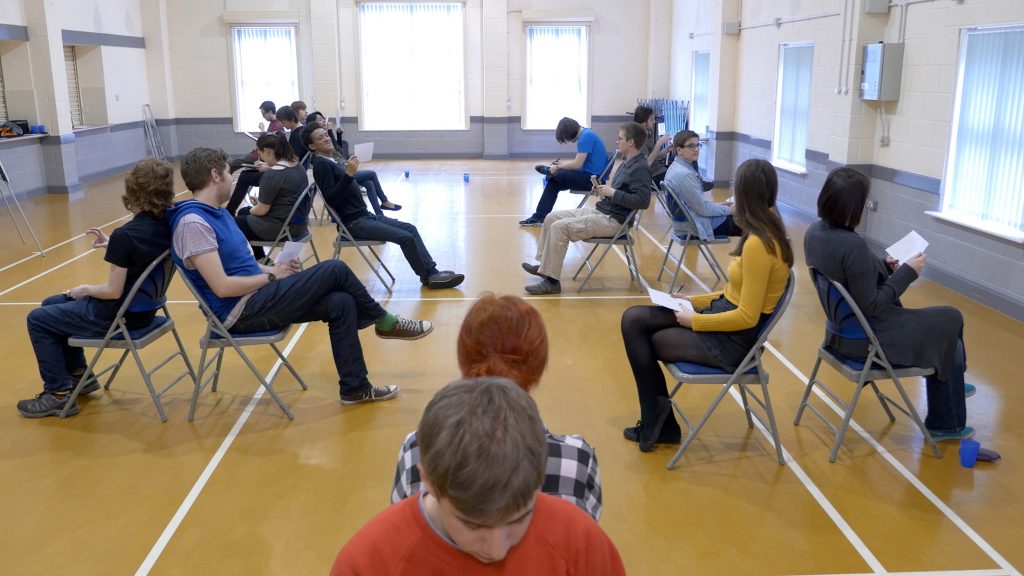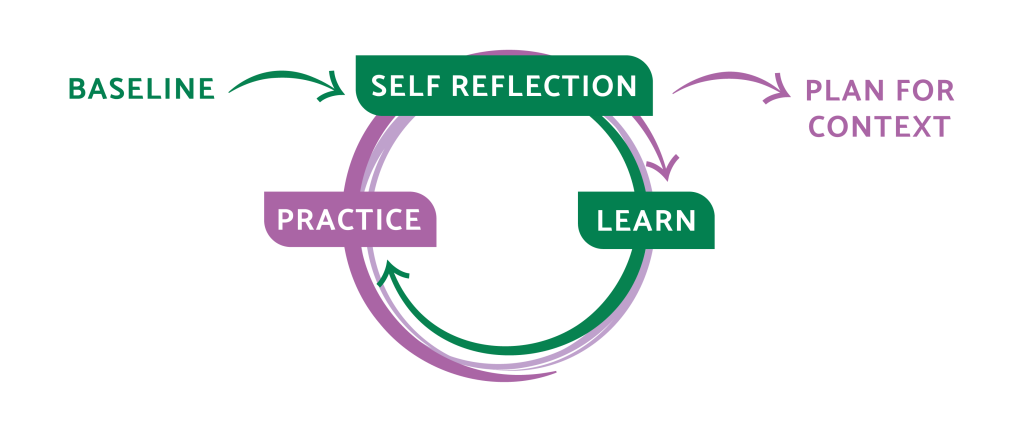In this blog post I want to show you how I design training in a 5 step learning cycle which ensures that your students engage with the process, develop confidence and go on to actually use what they learned in their work and studies.
Training is all about helping people to learn and apply practical skills. When you think of effective training, I hope that you are imagining that your students are:
Unfortunately, it’s not that common for training to hit all of these criteria. In my experience, if you aren’t getting these results it’s generally down to these common barriers:
The way to overcome these challenges is to see learning as a cycle, rather than a linear or transmissive process.
Before getting into the theory of what I’m doing, I want to share with you an example of a training programme that I may run to develop students’ active listening skills.
Cue a massive eye roll here! “We are adults. We don’t need teaching how to listen.”
Exactly.
Active listening is one of the hardest topics to get students (and adults of all ages) to engage fully in because each person genuinely believes that they know everything there is to know about listening – so why am I wasting their time?
I am immediately working with resistance and a readiness to disengage that I need to overcome. Now, if I went into a chalk and talk lecture on how to listen I would lose them completely.
 So, I kick things off with an unsuspecting ‘energiser’ or game that they think is just for fun. Depending on the purpose of the training it could be sending a message in a fast relay, listening to a story and then answering questions, communicating with their eyes closed, solving a team puzzle or even discussing a morality scenario.
So, I kick things off with an unsuspecting ‘energiser’ or game that they think is just for fun. Depending on the purpose of the training it could be sending a message in a fast relay, listening to a story and then answering questions, communicating with their eyes closed, solving a team puzzle or even discussing a morality scenario.
Straight away students are engaged because they get to do something (and they may bond in the process for an added bonus!)
And then we debrief… “So what went well? What were the challenges?”
People grin in embarrassment at the bottom line: “We didn’t listen so well / We could have listened better.”
Perfect. Now I facilitate an open-ended chat about what some of the barriers to listening are. There are common challenges that we all share but there may be individual challenges too – what did you notice about yourself? We identify the benefits of effective listening – how would it improve your lives if you were a better listener?
All of that leads to a place where the students are both ready and excited to dig into the theory of good listening. (Even though they were disinterested before).
Again, this depends on the purpose of the session but we may cover levels of listening, summarising, body language to support rapport, noticing bias and judgements when listening, giving presence, managing distractions and asking questions to support active listening.
For each skill we cover, we explore the theory, look at some examples and then practice it in small groups. We then reflect on how that practice went – what has improved? What is still challenging? And we continue to practice until confidence and ability levels rise.
Then we put it all together by going back into the same (or a different) listening game we did at the beginning so that your students can see the improvement in their skills.
Excellent.
The final step – “How are you going to use this in your life?” There generally won’t be weird trainers springing communication games on your students in their day to day lives. I invite them to identify a few core areas where improved listening would help them. I support them in planning how they will use the skills and get them to emphasise the benefits so that they can self-motivate.
And that’s roughly how I work with students on any of the training topics I cover.
All of that may sound like fun and games (which it is!) but I am also following a carefully crafted process in order to deliver excellent outcomes:
 HOW THE LEARNING CYCLE SUPPORTS EFFECTIVE TRAINING
HOW THE LEARNING CYCLE SUPPORTS EFFECTIVE TRAINING
Following this process yields far better results than ‘tickbox’ training or lectures because each piece of the cycle performs important functions.
A few of you may be reading my learning cycle and be reminded of the work of Kolb. His four stage learning cycle looks like this:
There are many similarities in the sense that:
The main ways I believe my process differs is in the acts of baselining and planning for context.
Kolb’s encourages educators to start with concrete experience and to come back around to it again. For me, baselining is fundamentally different. Although it is a concrete experience, it also establishes your starting point for learning. This means that all further concrete experiences are about practicing and checking progress rather than establishing prior knowledge and ability.
The Kolb’s cycle doesn’t explicitly talk about action planning. Within the active experimentation section his learners are encouraged to apply their ideas to the world around them. However, sometimes this cannot happen in the learning space. People attend a training programme in a ‘bubble’ and are then sent out into the world where the idea of experimenting may be risky. “What if I use the skills in a way that is ineffective for me?”
I encourage students to plan for their context knowing that they will feel different back in their ‘real world’. It will take some focus and motivation to ensure that they utilise the skills they have practiced in a way that works for them.
So, although my cycle definitely has similarities to Kolb’s, I’d like to think that I add an extra something to ensure that your students can confidently apply skills after training.
If you are planning training for your students I’d highly encourage you to check that you have all five elements of an effective cycle in place:
Following this process will embed the learning so much deeper and ensure that your students are empowered to really use the skills they need for success.
Already spinning too many plates? I can handle your training needs whilst you get on with what you do best.
Find out how to work with me.
Kolb, D. A. (1984). Experiential learning: Experience as the source of learning and development (Vol. 1). Englewood Cliffs, NJ: Prentice-Hall.